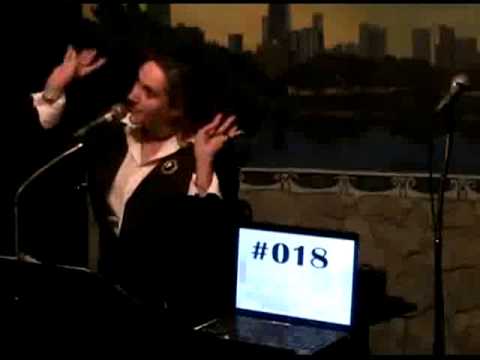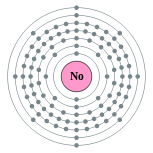Argon
Janet Kuypers
from the “ Periodic Table of Poetry” series
Argonne National Laboratory (the first U.S. science
and engineering research national laboratory).
was started because Enrico Fermi’s Manhattan Project
was to create the world’s first self-sustaining nuclear reaction.
They constructed “Chicago Pile-1“, which achieved criticality
(a sustained nuclear fission reaction) December second
nineteen forty two, under the University of Chicago’s
Stagg football field stands. But since this experiment
was too dangerous to conduct in a major city,
it was moved to a spot nearby in Palos Hills,
and named “Argonne“ after the surrounding forest.
You know, when I was trying to learn
about the element Argon,
I was really hoping that Argonne Lab,
so close to where I grew up,
would have something to do with Argon
(and not a nearby forest preserve)…
Now, the element Argon got its name
from the Greek word meaning “lazy“,
but that’s because Argon atomically is stable
and resistant to bonding with other elements.
And because Argon has about the same solubility
in water as oxygen, Argon often displaces oxygen
and moisture-containing air in packaging materials,
to extend the shelf-lives of the contents.
You know, other noble gas elements
would probably work as well as Argon for this,
but Argon is the cheapest
(so I guess the cheap one wins).
Since Argon is colorless, odorless, and —
this is the important one —
does not satisfy the body’s need for oxygen,
Argon is therefore an asphyxiant.
And since it’s hard to detect,
it’s highly dangerous in closed areas.
But on the plus side,
liquefied Argon is used in cryoablation
to actually destroy cancer cells
with Argon plasma beam electrosurgery.
And the thing is, Argon can also be used
to create incandescent lights
looking like blue neon
(and you can just add a little mercury
to make the light more electric blue).
I wonder if that blue light Argon can emit
looks anything like what we see in the night sky,
because the one tidbit about Argon that really got to me
was that Argon is used (primarily in liquid form)
as the target for direct Dark Matter searches.
The interaction of a hypothetical WIMP
(a “weakly interacting massive particle“)
with the Argon nucleus produces scintillation light,
and Argon gas can detect the ionized electrons
made during the WIMP-nucleus scattering.
#
Okay, okay, when I was playing cards once,
we decided to place bets
on what the winner of each hand would get.
Since we didn’t have any money
and we on an astronomy kick,
the first winning hand won the Moon,
then the Earth, then more of the planets,
then the Asteroid belt, the Kuiper Belt,
the Ort Cloud, the Solar System,
then the Milky Way Galaxy.
We may have even bet on the Andromeda Galaxy,
or constellations like Orion
(even though the stars and the nebula
in the constellation are nowhere
near each other in the Universe)…
Then my opponent suggested
the winner of the next hand
would have dominion over Dark Matter.
Alright, they won that hand, but the winner
of the next and final hand won the Universe,
and since I won that hand, I wanted to say
that I therefore ruled over the Dark Matter as well…
Now, you can’t see Dark Matter directly;
scientists believe that this hypothetical Dark Matter,
which neither emits nor absorbs light or radiation,
can take up to eighty-four percent
of all of the matter in the Universe.
Since Dark Matter can’t be seen,
scientists can only infer the existence
of Dark Matter by its gravitational effects
on other matter in the Universe.
And they assume the corresponding particle
in Cold Dark Matter
is a weakly interacting massive particle.
A WIMP.
Now, this is all hypothetical,
But think about it:
if the Dark Matter within our galaxy
is made of WIMPs, then thousands of WIMPs
pass through every square centimeter
of the Earth
each second.
Kind of cool.
And if Argon is used to help detect
these hypothetical WIMPs,
that’s kind of cool too…
Because this stable noble gas
might be difficult for people
trying to breathe in confined spaces
when Argon can easily displace oxygen,
but Argon can help remove cancer
from our bodies,
can light the way,
and may even help us learn more
about some of those undiscovered details
in the Universe too.



